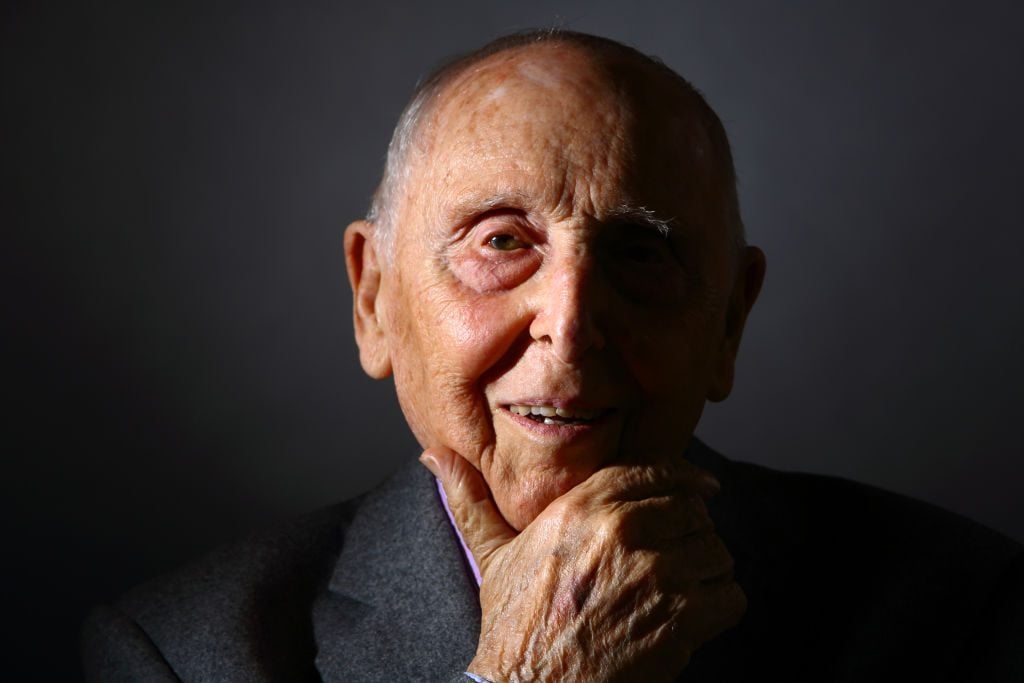People
Daniel Cordier, the Revered French Resistance Fighter Who Went on to a Successful Career as an Art Dealer, Dies at 100
In 1961, Cordier presented Robert Rauschenberg's first show in France.

In 1961, Cordier presented Robert Rauschenberg's first show in France.

Kate Brown

The French Second World War resistance fighter Daniel Cordier, who parlayed his wartime experiences into a career as a collector and art dealer, has died at age 100.
Revered in the country’s cultural sphere, Cordier was recognized also by top government officials as a key member of France’s wartime generation.
“The President of the Republic bows with respect, emotion, and affection, before the memory of this man whose whole life will have combined the love of France and the passion for freedom, the taste for the beautiful, and the concern for the truth,” President Emmanuel Macron said in a statement.
Born in 1920 in Bordeaux to a wealthy family, Cordier nurtured extreme right-wing and anti-Semitic views as a youth, but said that all changed when France was occupied by the Nazis. After seeing two French Jewish citizens with Stars of David sewn into their coats, he trained for the Gaullist Free France movement and then parachuted into the country to go undercover with the resistance.
During his mission, he was connected in Lyon to his senior operative, Rex, the cover name for the resistance fighter and amatuer painter Jean Moulin. While working for Moulin, he became a leftist, a pro-democracy advocate, and a lover of modern art, all views that were nurtured by Moulin’s own passions. Moulin also introduced Cordier to painting, which he pursued privately.
The two adopted cover as art dealers in Nice, with Cordier posing as a gallery assistant. They showed works by Bonnard, Degas, and Matisse, and behind the scenes, worked to unite the many factions of the French resistance into one council.
In July 1943, Moulin was betrayed to the Gestapo, arrested, tortured, and murdered. Cordier later became Moulin’s biographer, penning a 4,000-page, five-volume book on this towering wartime figure who had influenced so much of Cordier’s thinking.
After the war, Cordier’s cover became his real-life vocation, as he became an art dealer, collector, and patron. His postwar contributions to the French art world were substantial: Cordier ran a prominent art gallery in Paris with outposts in Frankfurt and New York between 1956 and 1964. In 1961, he organized the first Robert Rauschenberg show in France.
In the 1973, he donated several works to a then-fledgling Centre Pompidou, and towards the end of his life, he offered further donations, both to the Pompidou (in 2010 and 2015) and the Musée National d’Art Moderne. His collection, which numbered around 1,000 works of art, included artists such as Jean Dubuffet, César, and Robert Morris.
“Daniel Cordier was an example of exceptional humanity, a fascinating person who brought together commitment, generosity, originality, and a sense of humor with an inimitable approach to creativity,” Centre Pomidou president Serge Lasvignes said in a statement. Without Cordier, Lasvignes said, the museum would lack its “richness” and “diversity.”
Cordier came out as gay at the age of 89, citing his generation’s intolerance towards gay people as a reason. In his award-winning memoir, he discusses his early realization of his sexuality while attending an all-boys Catholic school.
“Daniel Cordier was a hero in more ways than one,” Bernard Blistène, director of the Musée National d’Art Moderne in Paris, said in a statement.